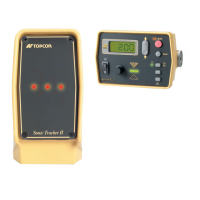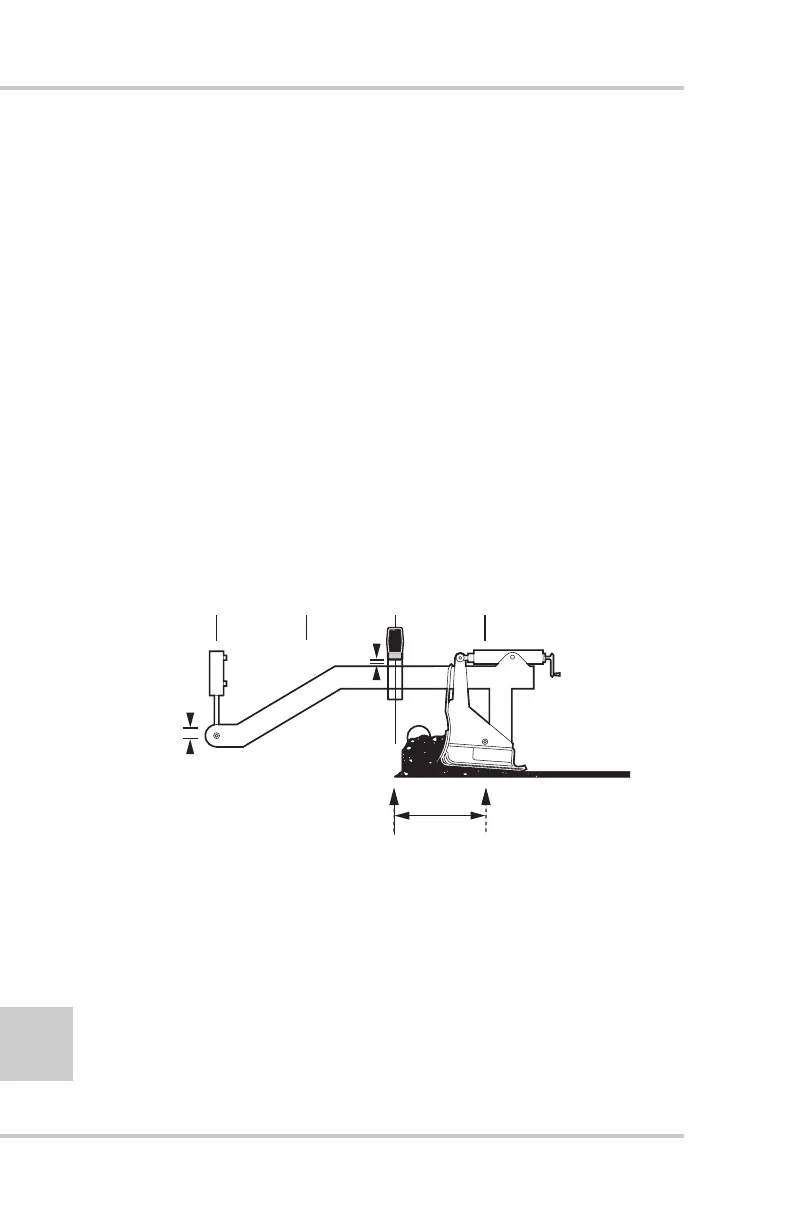Tracker and SAS Placement
Topcon Paver System Five Operator’s Manual
6-12
The best place for the tracker is in the 1/3 to 2/3 zone, but where do
we position the tracker within that area? That depends on what end
result of paving you are trying to achieve. As the tracker is moved
further back towards the screed it becomes more reactive. At the 1/3
point a 1/4 inch correction at the tracker will cause a 3/4 inch
correction at the tow point (Figure 6-15). Another way to look at it
is the “Net Tow Arm Length”.
A paver with a 9 foot tow arm and no sonic tracker will take 27 feet
(9 feet x 3 tow arm lengths) to see 96% of the elevation change. If a
tracker is placed at the 1/3 point, or 3 feet in front of the screed
pivot point, then the paver must move 9 feet (3 feet x 3 tow arm
lengths) for 96% of the elevation change. The tracker is measuring
the distance to the reference, so its position along the tow arm
becomes the “net tow arm length”. A more reactive screed would be
beneficial for applications where it is important to match the
reference, such as tracking a curb and gutter or matching a joint.
Figure 6-15. Correct Placement of Sonic Tracker
As the tracker is moved further forward the screed becomes less
reactive. A tracker placed at the 2/3 point and looking for a 1/4 inch
correction will only cause the tow point to move 3/8 inch. The net
tow arm length is now 18 feet (6 feet x 3 tow arm lengths). This
would be a better tracker position for applications where
smoothness is desired such as mainline paving or when using a
mechanical or non-contacting (SAS) ski.
"Net Tow Arm Length"
1/32/3
S
onic
T
racker
II
/4"
1/4"

